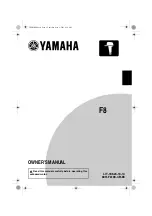
DSB75 Development Support Board Rev. B1 Hardware Description
Confidential / Released
DSB75_hd_v12
Page 68 of 96
2008-08-26
4.1
Indication of Asynchronous Serial Interface Signals
All signals of the asynchronous interfaces ASC0, ASC1 and ASC2 are connected to buffers
which drive 16 indicator LEDs. These buffers are enabled via the PWR_IND line which is
activated by the module. As a result, the indication only is active if the module is turned on.
For all: 0=on, 1=off
RTS0,
CTS0,
DSR0,
DTR0,
DCD0,
RING0,
RXD1,
TXD1,
RTS1,
CTS1
RXD2
TXD2
RXD0
USC2
TXD0
USC1
3V0
12
14
RXD0 / USC2
TXD0 / USC1
RTS0
CTS0
DSR0
DTR0
DCD0
RING0
RXD1
TXD1
RTS1
CTS1
RXD2 / GPIO9
TXD2 / GPIO10
V235
V230
V233
V234
V237
V232
V236
V231
14x
V238
V240
V241
V239
V242
V243
LED
Signal
EN
PWR_IND
14x
Figure 41: ASC signal indication circuit
4.2
Indication of GPIO Signals and SYNC
If no SD card is in use, the GPIO signals provided at the B2B connector can be used for
status indication. Buffers connected to these lines are enabled by the PWR_IND line which
is activated by the GSM module. As a result, the indication only is active if the module is
turned on.
For all: 0=on, 1=off excepted SYNC signal: 0=off, 1=on
3V0
8
8
8x
LED
Signal
GPIO1 / SD_DO
GPIO2 / SD_D1
GPIO3 / SD_D2
GPIO4 / SD_D3
GPIO5 / SD_CLK
GPIO6 / SD_CMD
GPIO9 / RXD2
GPIO10 / TXD2
V450
V451
V452
V453
V454
V455
V242
V243
V244
SD_DO
SD_D1
SD_D2
SD_D3
SD_CLK
SD_CMD
RXD2_GPIO9
TXD2_GPIO10
SYNC
PWR_IND
EN
8x
3V0
















































